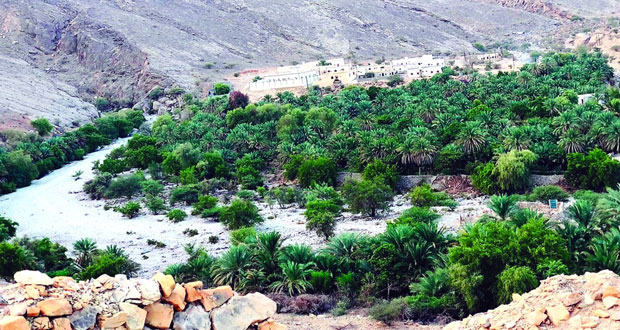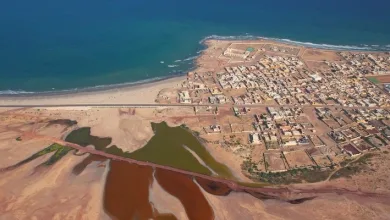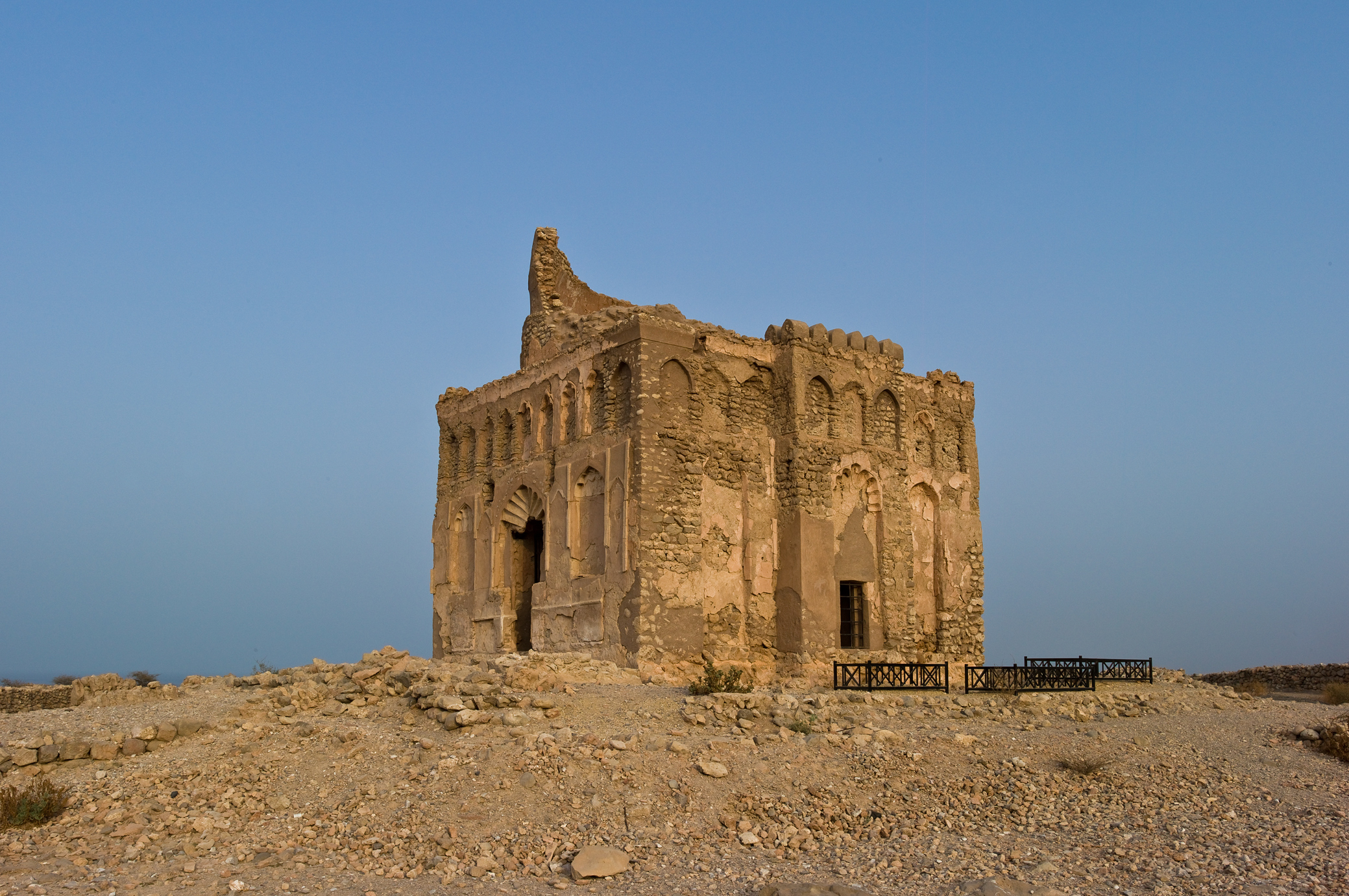“Abat” in the Wilayat of Sur.. picturesque nature and tourist attractions that attract visitors
Sur – Oman: There are a number of mountainous areas and villages in the Wilayat of Sur in the South Al Sharqiyah Governorate, distinguished by their picturesque scenery, which attract visitors when they visit them due to the availability of tourist attractions such as mountains, valleys, agricultural flats, and various archaeological sites.
The village of “Abat” is one of these mountain villages and the largest village in the “Al-Manqal” Valley in terms of area and population. It is located in the far west of the “Al-Manqal” Valley and is bordered to the north by the foothills of the “Ant” Mountains, to the south by the village of “Tima”, to the east by the village of “Hawajer”, and to the west by the towering Al-Hajar Al-Gharbi Mountains. It is about 48 kilometers away from the center of the state. It can be reached via the main road from the Wilayat of Sur to the Wilayat of Al-Kamil and Al-Wafi at the “Al-Fulaij” area, then turn left and take the mountain road for a distance of 20 kilometers passing through the “Tima” area, then turn right and reach the “Al-Khuwair” area and take the right of the street where you face some turns and mountain heights and see the “Abat” Valley, then reach the “Fayah” area, then the “Hawajer” area, followed by the “Abat” area, then reach the village of “Abat”.
Mohammed bin Rashid Al Alawi, Rashid Al Qarya, said: “The village of “Abat” is distinguished by its central location in the “Al Manqal” valley. The name “Abat” is derived from the word “al-A’baa”, which means fatigue. The fruits of the palm trees are abundant in some years, so the farmer benefits from their fruits in terms of harvesting the crop, and in other years it is little due to the low water level in the falaj, as the village is irrigated from one falaj, which is not enough to irrigate large agricultural areas. The village is divided into small neighborhoods interconnected with each other, including (Al-Nimr, Al-Raq’a, Al-Hisn, Al-Ma’la, Al-Hail, Al-Murtafa’a, and Al-Manzaf).” He added to the Omani News Agency: “The climate of the village is warm in winter and hot in summer. The villagers depend on the “Abu Talqa” falaj to irrigate their crops, which is a spring-fed falaj that springs from inside the mountains. Its name is derived from the word “talq”, sometimes it flows and increases the water level, and other times the water level remains constant.”
For his part, Yousef bin Khamis Al-Dawudi, one of the village residents, says, “Most of the villagers, like other villages in the valley, depend on agriculture and the textile industry for their economic activity, which is still practiced to this day. When you enter the village, you hear the sound of the weaving machine (kareh) through which (the wizar, the masr, the Omani turban, and the shadr worn by women) are made, in addition to the manufacture of palm fronds such as the da’un, the karr that is relied upon for the palm tree to grow, and the jafran, which is a container used to carry dates. The villagers also practice the profession of raising livestock.” Among the agricultural crops that the village is famous for is the cultivation of palm trees in their various varieties such as (barni, medloki, naghal, and abu naranjah), in addition to the cultivation of mangoes, bananas, lemons, and orange-like bitter oranges, among others. Regarding the folk arts and folk games that the village of “Abat” is famous for, Nasser bin Khalfan Al-Alawi, one of the village’s residents, says: “The village is famous for some folk arts, including (Al-Razha, Al-Azzi, Al-Hayous, Al-Muzmil, and Al-Hibeya), which are male arts, in addition to the art of “Al-Sharh,” which is a female art.”
There are also traditional games played by the villagers such as “Malouk” and “Al-Maqraa” which are played especially during rainy seasons, in addition to the “Al-Huwailis” game which is played by adults and children. He added: “There are many historical landmarks in the village, most notably the “Al-Nimr” Tower, the “Harat Al-Hisn” Tower, the “Al-Wadi” Tower, the “Harat Al-Raq’a” Tower, and the “Al-Bir” Castle, which has a private residence for the castle guards, a water storage tank, and an ancient mosque.”
There is also an old fort in the village that sits on top of the mountain. It was used in the past as a guard post, and there are traces of a horse stable. There are also some old historic houses that are currently extinct and need development and attention to become a tourist attraction.







